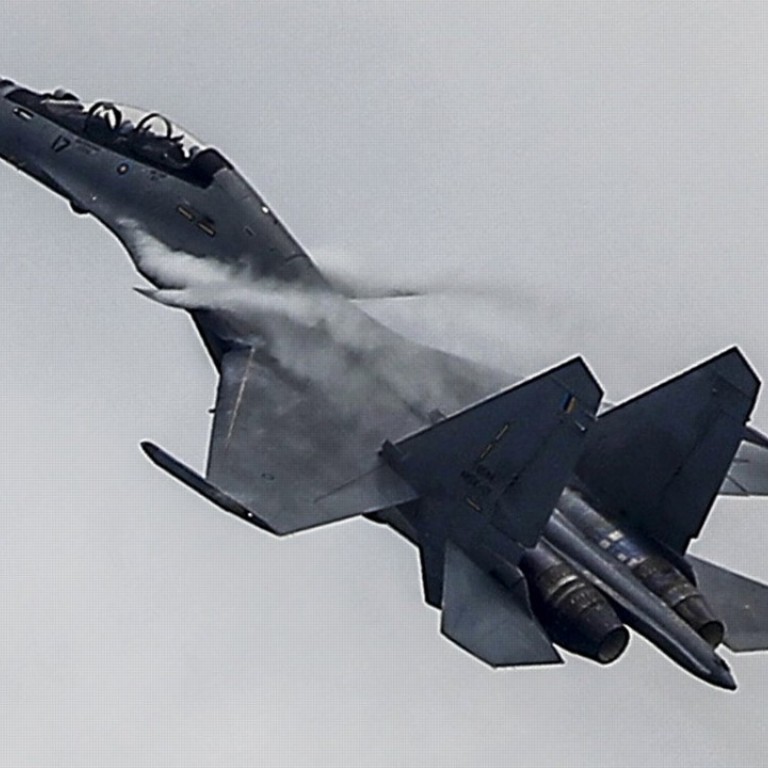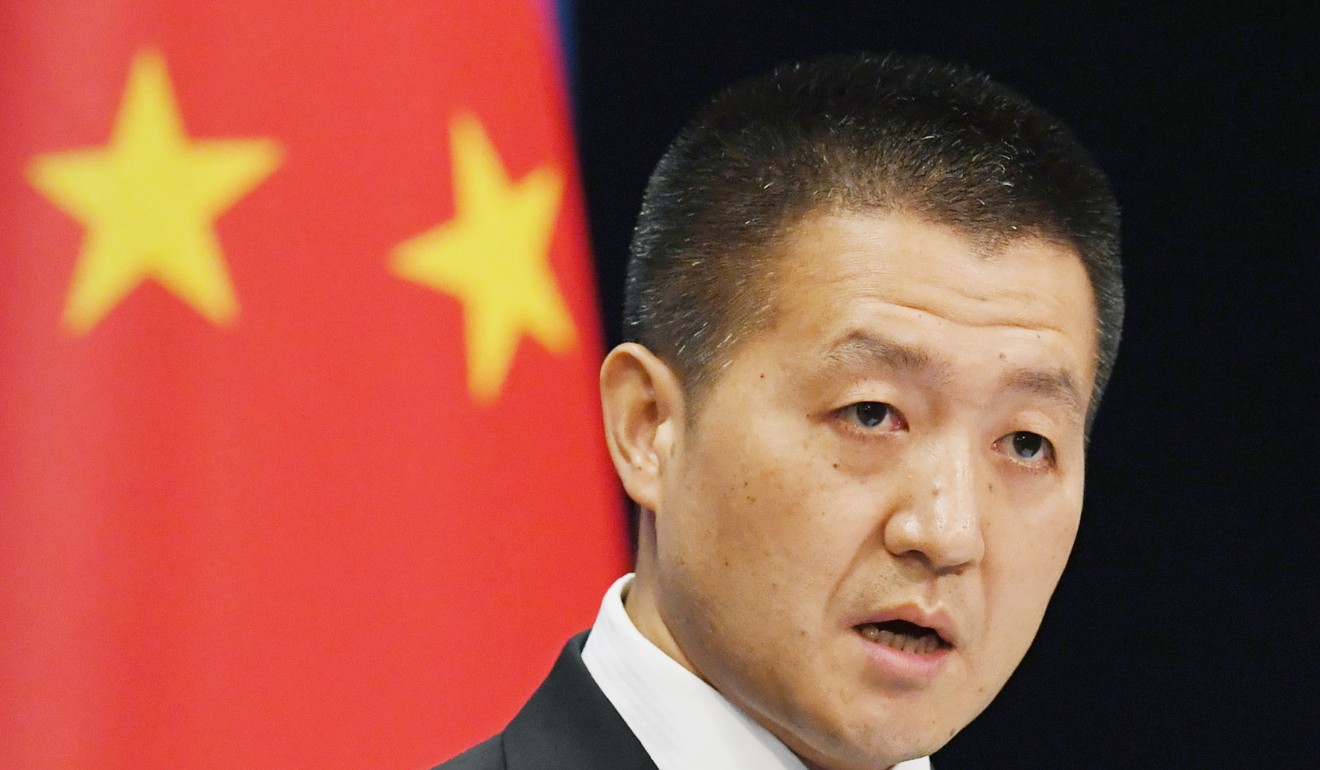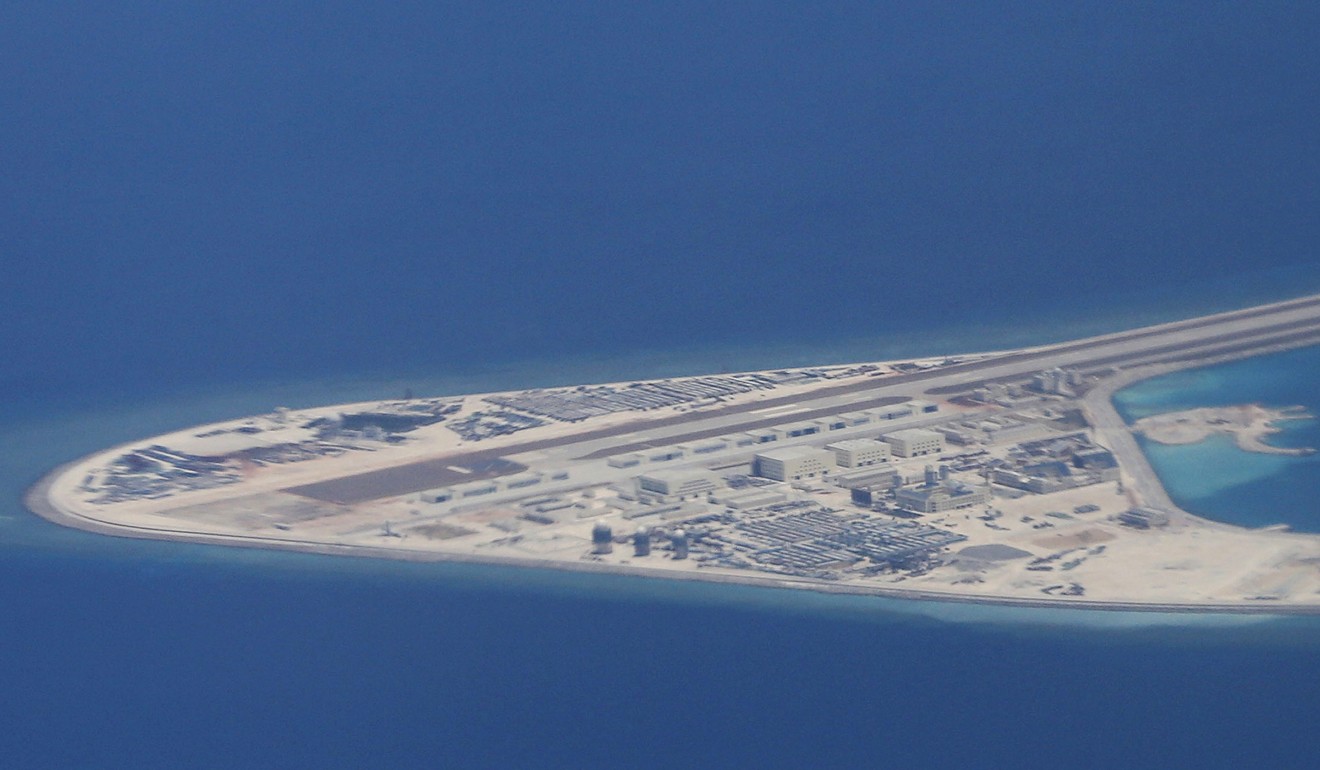
China shows US its military muscle with patrol off Hong Kong waters amid rising maritime tensions
Days after a ‘dangerous’ Hong Kong-area encounter between Chinese and US military planes, China showed its power by patrolling the region’s air and water
China conducted a “routine” air and naval patrol of the waters off Hong Kong on Monday, in an apparent show of military power just days after a “dangerous” encounter between Chinese and American military aircraft near the island.
Military analysts believe the maritime patrol by the Hong Kong Garrison of the Chinese People’s Liberation Army – in the lead-up to the 20th anniversary of the city’s handover from Britain to China – clearly targeted US military manoeuvring in the disputed waters of the South China Sea.

The patrol, involving the Qinzhou and Huizhou destroyers and three helicopters, was part of normal monitoring and tracking of suspicious activity in Hong Kong waters and airspace and dealing with emergency situations, according to a statement from China’s Ministry of Defence.
Warships from Ngong Shuen Chau naval base headed toward the East Lamma Channel via Victoria Harbour on surveillance patrol, while aircraft from the Shek Kong barracks intercepted suspicious objects as per emergency guidelines.
In particular, the exercise tested China’s home-grown Beidou satellite navigation system and other military communication and command systems.
The joint air and sea patrol came as the Pentagon accused Beijing of militarising its artificial islands in the contested South China Sea with warplane hangars and weapons, in its annual assessment of China’s military on Tuesday.
Tensions between Beijing and Washington over the maritime dispute have resurfaced in recent weeks.

In late May, the US Navy conducted its first freedom of navigation operation since President Donald Trump took office, with the guided missile destroyer USS Dewey sailing within 12 nautical miles of Mischief Reef in the Spratly Islands.
Last week, China’s defence ministry accused the US armed forces of posing a danger in the South China Sea, while the Pentagon said two Chinese J-10 fighter jets conducted an “unsafe and unprofessional” intercept of a US Navy surveillance aircraft in international airspace just 240km southeast of Hong Kong.
Military experts said it was rare for US surveillance aircraft to fly so close to Hong Kong on an intelligence mission, underscoring the tension between the two militaries.
Ni Lexiong, a Shanghai-based military expert, said the latest air and naval patrol was clearly Beijing’s response to Washington’s insistence on its right to conduct freedom of navigation operations in the area.
The renewed tension between Beijing and Washington in the South China Sea has laid bare the complexity of the China-US relationship, despite earlier indications that ties between the two powers were growing warmer after the first summit between Trump and his Chinese counterpart, Xi Jinping, in April.

Although Trump may still need Beijing’s help to rein in North Korea and its nuclear threat, there is no indication Washington intends to retreat from the Asia-Pacific region, Ni said.
“The recent tensions have yet again shown the US has vital strategic interests in the South China Sea and it also wanted to contain China’s military rise in the region,” he said.
At the annual regional Shangri-La Dialogue security forum over the weekend, US Secretary of Defence Jim Mattis accused China of displaying contempt for other nations’ interests and undermining regional stability by seeking to militarise the South China Sea.
Ni said the PLA patrol near Hong Kong also appeared to be aimed at purported pro-independence sentiment in the city.
“The message is clear and loud,” he said. “Hong Kong, as part of China, is also under the threat of military reconnaissance and surveillance by other countries.”

